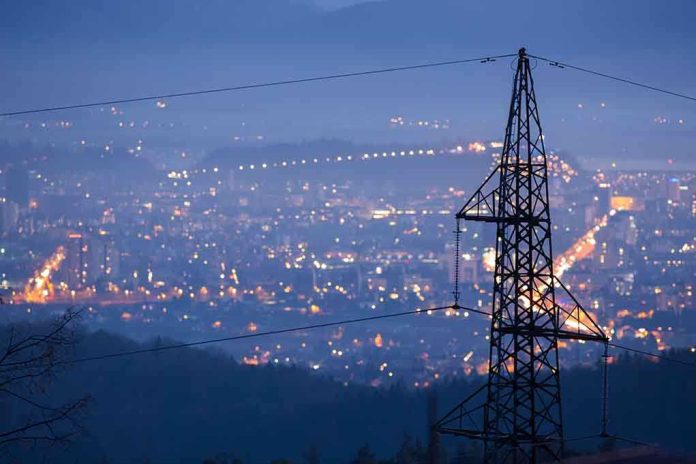
Electricity prices in the U.S. could skyrocket due to AI demand unless energy output significantly increases, warns the White House.
At a Glance
- AI and cloud computing demand is driving up electricity consumption.
- The White House warns of potential electricity price spikes ranging from 9% to 58% by 2030.
- The U.S. needs $1.4 trillion in new energy investments to meet demand.
- China is poised to surpass the U.S. as the largest nuclear power producer by 2030.
The AI Energy Demand Surge
The rapid growth of artificial intelligence and cloud computing is pushing U.S. electricity demand to new heights. Historically, electricity demand in the nation grew at a modest rate of less than 1% per year. However, in 2024, this trend reversed with an increase of 2%, largely spurred by the needs of AI and cloud computing. Data centers are at the heart of this surge, consuming more electricity than some of the country’s major industrial sectors combined, including aluminum and steel.
The White House Council of Economic Advisors (CEA) has issued a stark warning: if the energy output does not keep up with this escalating demand, Americans could face electricity price hikes ranging from 9% to 58% by 2030. It’s a call to action for the U.S. to ramp up its energy infrastructure to avoid an economic and social fallout.
Stakeholders and Their Roles
Key players in this unfolding drama include the White House CEA, the U.S. Department of Energy, AI and cloud computing giants like Microsoft, and electric utilities and grid operators. Each has a vested interest in ensuring grid reliability and affordable power. The tech companies are particularly motivated, having invested heavily in renewable energy to power their operations, signaling a shift towards cleaner energy sources.
Meanwhile, the energy sector faces the dual challenge of meeting the surging demand and integrating renewable sources into the grid. The stakes are high, as failure to address these needs could lead to significant competition for grid capacity, affecting both industrial and residential users. The CEA emphasizes that without new investments, AI data centers might crowd out other grid users, leading to higher costs for consumers.
Current Developments and Future Projections
The White House report, released in July 2025, estimates a need for $1.4 trillion in energy investments from 2025 to 2030. This is crucial to meet the demands of AI, industrial electrification, and the reshoring of manufacturing. Notably, China’s aggressive expansion in nuclear energy is setting a global benchmark, with projections indicating it could become the world’s largest nuclear power producer by 2030.
In response to these challenges, over 300 proposed energy projects totaling 26 GW have cleared the interconnection process and are slated to begin construction in 2025. Yet, the pace of these developments must accelerate to prevent supply constraints and potential price hikes that could impact consumers and industries alike.
Implications and Expert Perspectives
The implications of this energy crunch are profound. Short-term, regions with high data center concentrations could experience electricity price volatility. Long-term, without substantial investments, the U.S. could face a 58% rise in electricity prices by 2030, affecting economic growth and consumer affordability.
Experts from energy analysts to tech industry leaders agree on the need for proactive planning. While AI-driven demand doesn’t pose an immediate crisis, it demands systemic solutions to avoid grid stress. Economists warn that unchecked demand could lead to significant price increases for all users, while policy experts emphasize the integration of clean energy with AI infrastructure to maintain grid reliability and climate goals.
Sources:
Columbia University Center on Global Energy Policy









